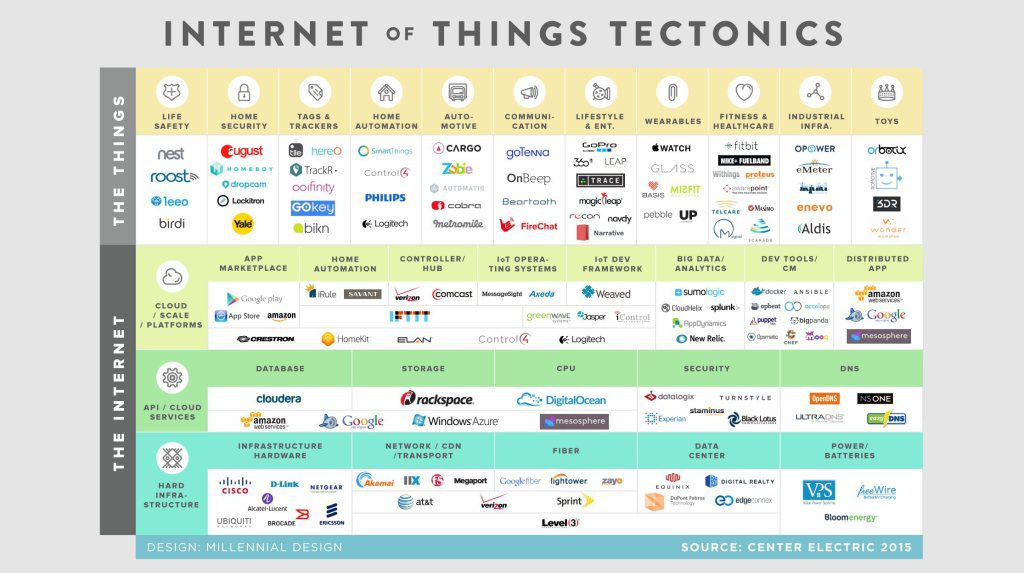The last time I wrote about the Internet of Things, I hoped for an application layer that could sense and collect data and convert it into use cases. In fact, the title of the post was Interweb of Things, the nuanced difference between them being connection (IoT) and interoperability. (WoT) (read) In the few months since that post, there has been quite some activity in the space. I saw a very useful classification a few days ago that illustrated both the ‘things’ as well as the infrastructure and showed the possibilities of interoperability. (via)
Google’s presence in the graphic above is only an indication of its IoT strategy, and I’d think that Android might be a great thread to connect it all together in the short run. Two words – Google Now. There’s been a lot of talk recently about Google losing its prime position. (example) Stagnating search advertising growth, Facebook’s strong showing in mobile advertising, Apple’s profitability from devices etc being the reasons. I am wondering if IoT will be a key to Google’s renaissance. (along with AI) Our interactions with the connected devices will result in a treasure trove of ‘intimate’ data that can be used for some excellent targeted advertising. Given its play in multiple verticals, Google will be in a great place to access the data. Arguably Glass was their big play at hardware beyond mobile. In any case, that didn’t seem to work. Yet. But with Nest, Dropcam and beyond (check out the patents including a smart doorknob!) Google does have quite some ammunition.
Samsung states that by 2020 all of the devices it sells will be connected to the IoT. For now, SmartThings, their recent acquisition, will serve as the connection between devices. (via) Apple, with HomeKit, is poised to become a key player as well. Quite possible that the combination of Apple Watch, Beacons and Apple Pay will bring in a completely new play on IoT. Even Amazon’s Echo is in the game. (read)
In the near and medium time frame, one of the things that I think will play a key role in converting the IoT into a WoT is the mobile device, mostly thanks to them being the common interface. The guys whom I’ve seen doing a great job with that right now is Xiaomi. The entire strategy seems to be use the very economical smartphone as the central device in their IoT plans. Recently they released a Smart Home Suite with four components – a human motion sensor, a couple of door and window sensors and a wireless switching device for controlling appliances. They already have a connected air purifier and a bulb. (via) TVs and water purifiers are on their way. [Incidentally, they are not the only Chinese brands in the IoT game]
As is evident, there are many companies creating their own navigation paths in the IoT ecosystem. Hardware, software, infrastructure, services, consumer identities and how it can all be made to work together. To me, this is looking to be a play even more significant than the web was. That makes it a very interesting battle indeed.
P.S. For some hilarious IoT ideas, check The Internet of Useless Things


Leave a Reply